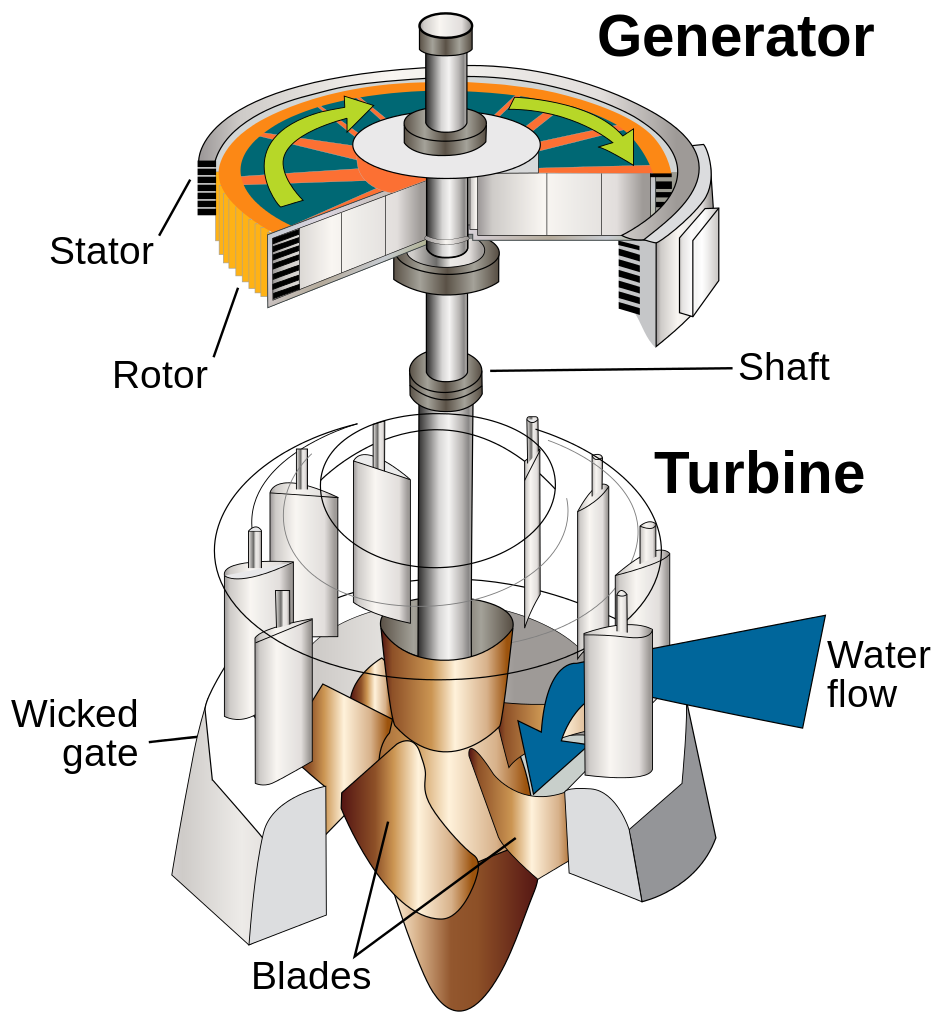Water Turbine Technology

Introduction to Water Turbine Technology
Water turbines are devices used in hydropower systems to convert the kinetic energy of flowing or falling water into mechanical energy. They are essential components of hydroelectric power plants and play a crucial role in generating electricity from water resources. Water turbine technology has evolved over time, offering various types of turbines suitable for different flow conditions and power requirements.
Question 1: What is the purpose of Water Turbine Technology?
a) To convert water into steam
b) To convert water energy into mechanical energy
c) To store water for irrigation purposes
Answer: b) To convert water energy into mechanical energy
Types of Water Turbines
There are different types of water turbines, including:
- Francis Turbine: Suitable for medium to high head applications, Francis turbines are reaction turbines with adjustable blades to optimize efficiency.
- Kaplan Turbine: Ideal for low to medium head applications, Kaplan turbines have adjustable blades and are commonly used in rivers and tidal power plants.
- Pelton Turbine: Designed for high head applications, Pelton turbines use multiple jets of water to generate rotational motion.
- Banki Turbine: Used for low head applications, Banki turbines are suitable for sites with variable flow rates and are often used in small-scale hydropower systems.
Question 2: What are some types of Water Turbines?
a) Francis, Kaplan, Pelton, Banki
b) Wind turbines and solar panels
c) Tidal turbines and wave energy converters
Answer: a) Francis, Kaplan, Pelton, Banki
Working Principles of Water Turbines
Water turbines operate based on different principles:
- Reaction Turbines: These turbines utilize both the pressure and the kinetic energy of water, causing a reaction as it passes through the blades.
- Impulse Turbines: These turbines convert the kinetic energy of a high-velocity jet of water into rotational motion.
Question 3: What principles do Water Turbines rely on?
a) Conversion of pressure and kinetic energy
b) Conversion of thermal energy into mechanical energy
c) Conversion of wind energy into electrical energy
Answer: a) Conversion of pressure and kinetic energy
Efficiency and Performance Factors
The efficiency and performance of water turbines depend on various factors:
- Head Height: The vertical distance between the water level above the turbine and the turbine’s outlet affects the turbine’s performance.
- Flow Rate: The volume of water passing through the turbine per unit of time affects the power output.
- Blade Design: The shape and angle of the turbine blades impact the turbine’s efficiency and ability to extract energy from the water.
- Runner Diameter: The size of the turbine runner affects the turbine’s rotational speed and power output.
Question 4: What factors affect the efficiency and performance of Water Turbines?
a) Water temperature and humidity
b) Head height, flow rate, blade design, runner diameter
c) Wind speed and solar radiation
Answer: b) Head height, flow rate, blade design, runner diameter
Advantages of Water Turbine Technology
Water turbine technology offers several advantages:
- Renewable Energy: Water turbines harness the power of flowing water, which is a renewable and clean energy source.
- High Efficiency: Water turbines can achieve high efficiency in converting water energy into mechanical energy and subsequently electrical energy.
- Reliability: Water turbines provide a reliable and consistent power source, as water flow can be controlled and predicted.
Question 5: What are some advantages of Water Turbine Technology?
a) Non-renewable and polluting
b) Renewable and high efficiency
c) Limited resource availability
Answer: b) Renewable and high efficiency
Case Studies
Well Done !